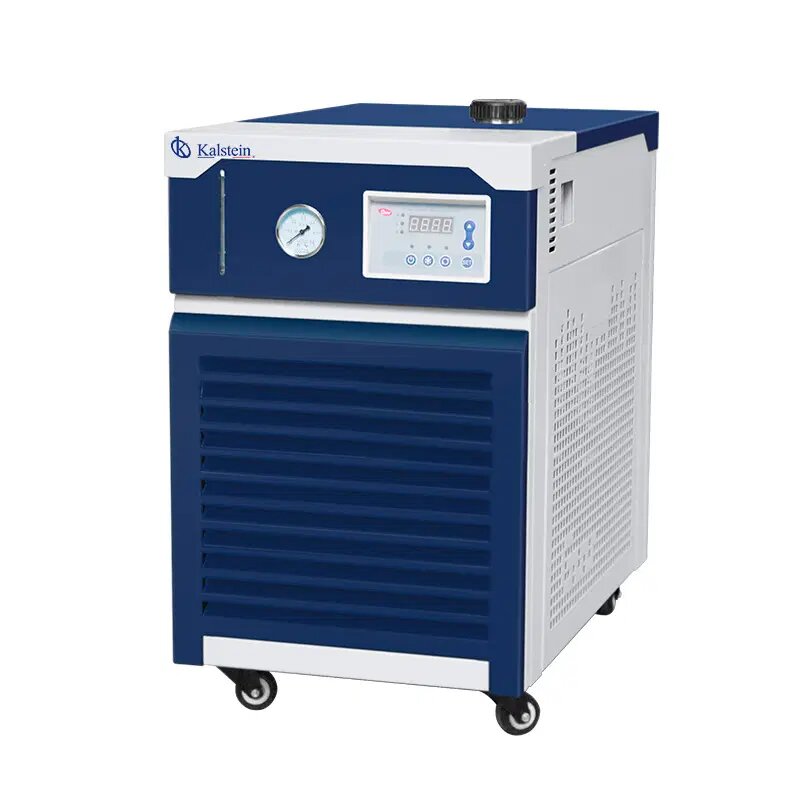In the realm of scientific research and laboratory analysis, precision and thermal stability are crucial. Laboratory recirculating chillers are essential devices that provide precise and constant temperature control for a variety of applications. From maintaining the appropriate temperature in sensitive equipment to ensuring the reproducibility of experiments, these devices are fundamental in any modern laboratory environment.
Recirculating chillers operate by circulating a coolant through a closed system, ensuring efficient and uniform heat transfer. This not only improves the accuracy of experiments but also extends the lifespan of laboratory equipment by preventing overheating.
Key Benefits of Recirculating Chillers
One of the main benefits of laboratory recirculating chillers is their ability to maintain a constant temperature with a high degree of precision. This is vital for applications that require strictly controlled thermal conditions, such as high-performance liquid chromatography (HPLC) and spectroscopy.
Additionally, these devices help reduce water consumption in laboratories. By recirculating the coolant, water waste is minimized, which is not only beneficial for the environment but also reduces operational costs. This makes recirculating chillers a sustainable and economical choice for laboratories.
Common Laboratory Applications
Recirculating chillers have a wide range of applications in the laboratory. They are used in processes that require precise thermal regulation, such as distillation, fermentation, and the storage of sensitive samples. Moreover, they are essential for maintaining the temperature in equipment such as electron microscopes and spectrometers.
In biotechnology and medical research, these devices play a crucial role in the preservation of biological samples and the control of temperature-sensitive chemical reactions. They are also used in the pharmaceutical industry for the development and testing of new drugs, ensuring that experimental conditions are reproducible and stable.
Comparing Recirculating Chillers: Kalstein vs. Competitors
When choosing a laboratory recirculating chiller, it is important to consider various factors such as temperature control precision, energy efficiency, and cost. Below is a comparative table between Kalstein recirculating chillers and their main competitors: Wiener Lab, Labware, and Sartorius.
|
Feature |
Kalstein |
Wiener Lab |
Labware |
Sartorius |
|
Thermal Control Precision |
±0.1°C |
±0.2°C |
±0.3°C |
±0.1°C |
|
Temperature Range |
-20°C to 100°C |
-10°C to 80°C |
-15°C to 90°C |
-20°C to 100°C |
|
Energy Consumption |
150 W |
200 W |
180 W |
150 W |
|
Tank Capacity |
5 Liters |
4 Liters |
5 Liters |
6 Liters |
|
Price |
Medium |
Medium-High |
High |
High |
|
Warranty |
2 Years |
1 Year |
2 Years |
3 Years |
Advantages and Disadvantages of Different Chillers
Each of these chillers has its own advantages and disadvantages. For instance, Kalstein’s recirculating chillers stand out for their high precision and wide temperature range, making them ideal for a variety of applications. Additionally, their energy efficiency and medium price make them an attractive option for many laboratories.
On the other hand, Wiener Lab chillers, while less precise, may be suitable for applications that do not require extremely precise thermal control. Labware offers a similar capacity to Kalstein but with higher energy consumption and cost, which may be a disadvantage for laboratories with limited budgets.
Sartorius, known for its high quality, offers precision comparable to Kalstein and a larger tank capacity but at a significantly higher cost. This can be an important consideration for laboratories seeking to balance cost with performance.
Frequently Asked Questions about Recirculating Chillers
What factors should I consider when choosing a recirculating chiller?
When choosing a recirculating chiller, it is important to consider the precision of temperature control, temperature range, energy consumption, tank capacity, and cost. Evaluating these features based on your laboratory’s specific needs will help you make an informed decision.
How does energy consumption affect the choice of a chiller?
Energy consumption is a key factor to consider as it directly influences long-term operational costs. Opting for an energy-efficient recirculating chiller can result in significant savings, especially in laboratories that operate continuously.
What maintenance does a recirculating chiller require?
Regular maintenance of a recirculating chiller includes cleaning the system, checking and replenishing the coolant, and inspecting components such as pumps and filters. Following the manufacturer’s recommendations will ensure optimal operation and extend the equipment’s lifespan.
Laboratory recirculating chillers are essential instruments that guarantee precise and constant temperature control in various scientific and medical applications. Choosing the right chiller depends on several factors, including precision, temperature range, energy consumption, and cost. The comparison between Kalstein, Wiener Lab, Labware, and Sartorius chillers shows that each brand offers unique features and advantages.
Kalstein stands out for its balance between precision, energy efficiency, and cost, making it a highly competitive option. However, it is essential to evaluate your laboratory’s specific needs to select the chiller that best meets your requirements. With the right equipment, laboratories can significantly improve the accuracy and reproducibility of their experiments, contributing to the advancement of science and technology.
If you want to explore the high-end product catalog we have for you at KALSTEIN, visit us at https://kalstein.de/category-product/laboratory-line/recirculating-chiller/. We assure you that through our easy and feasible online PURCHASE channels, you will find the best prices on the MARKET. Remember, at KALSTEIN, we MANUFACTURE high-level Laboratory Equipment for SALE. https://kalstein.de/

